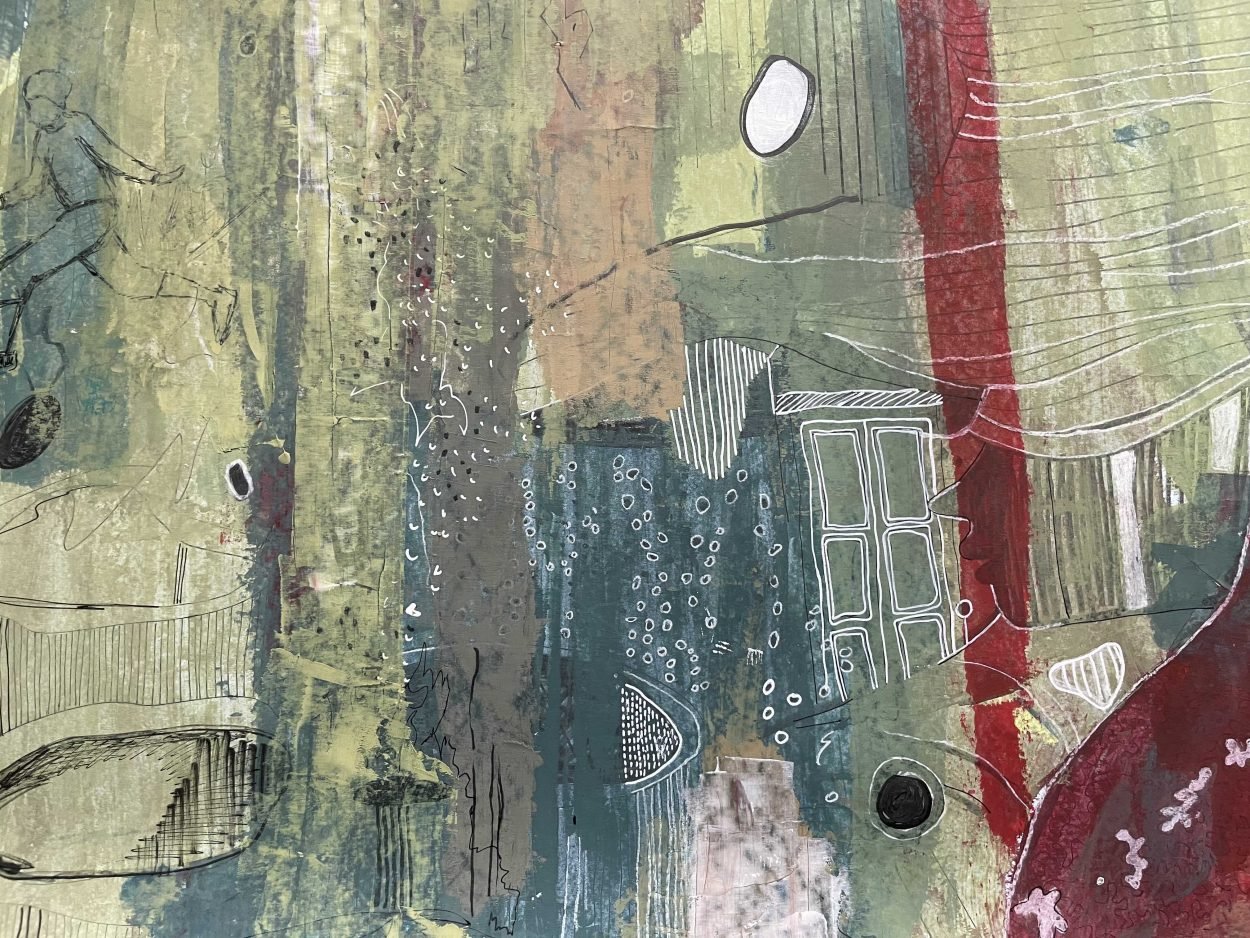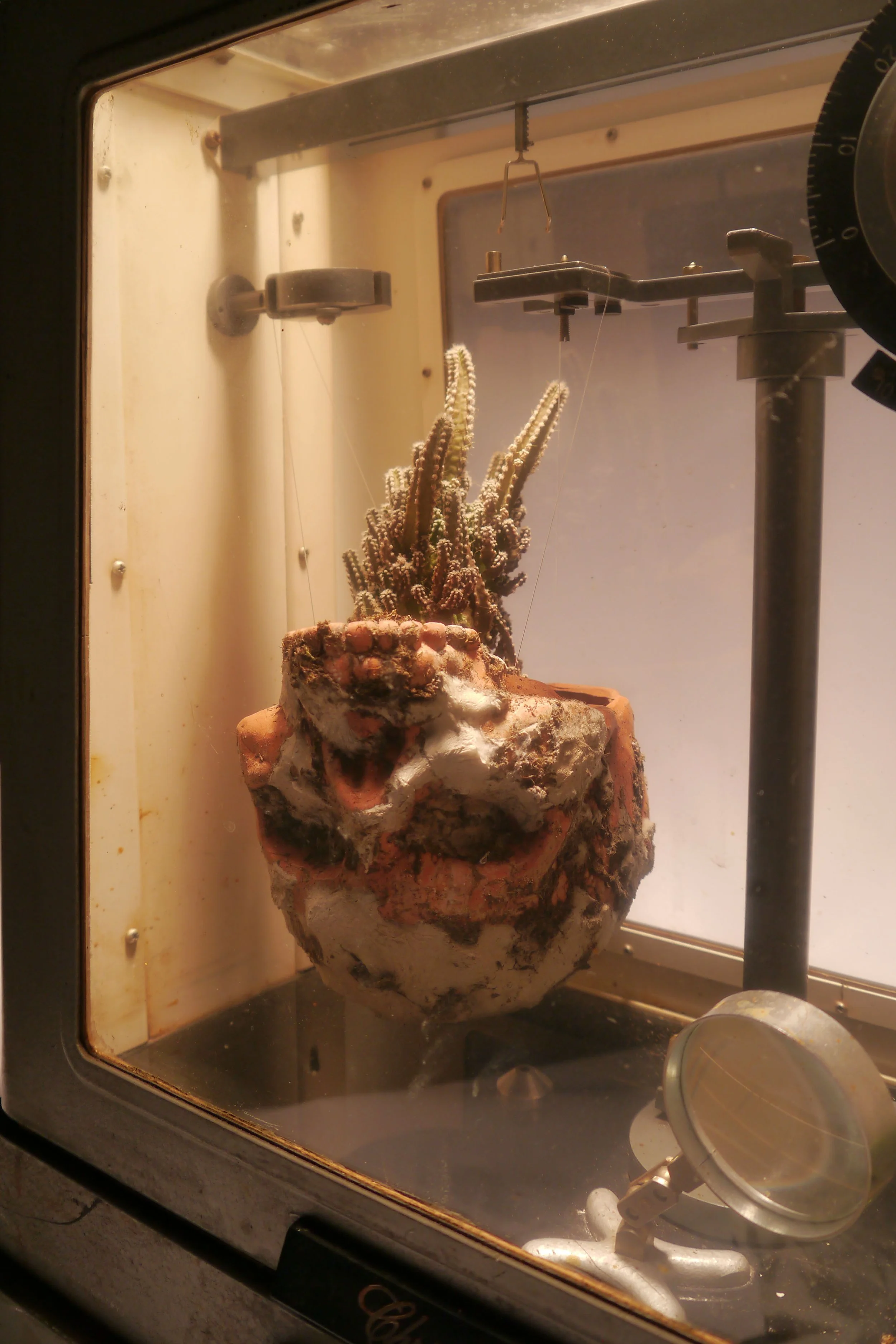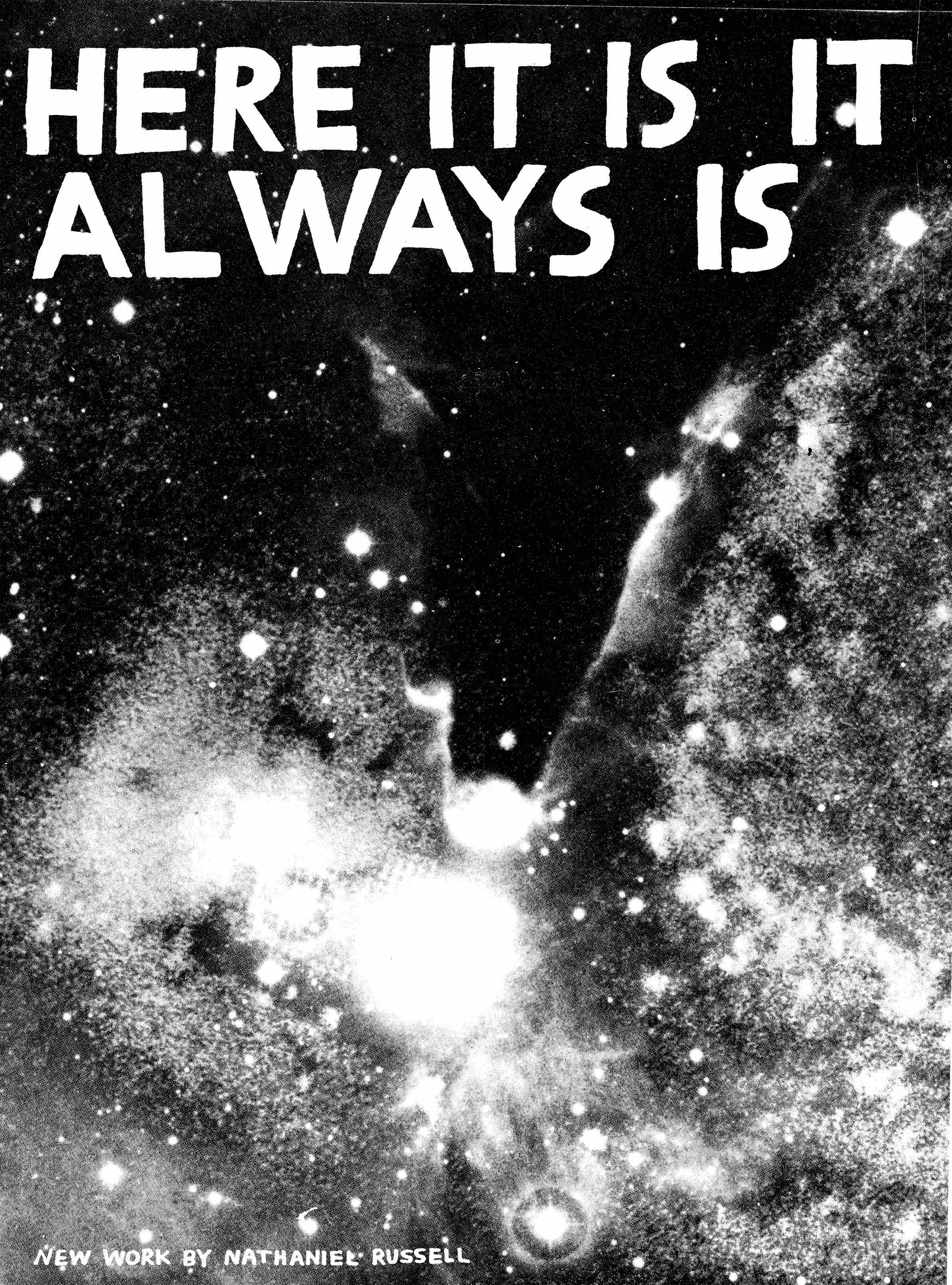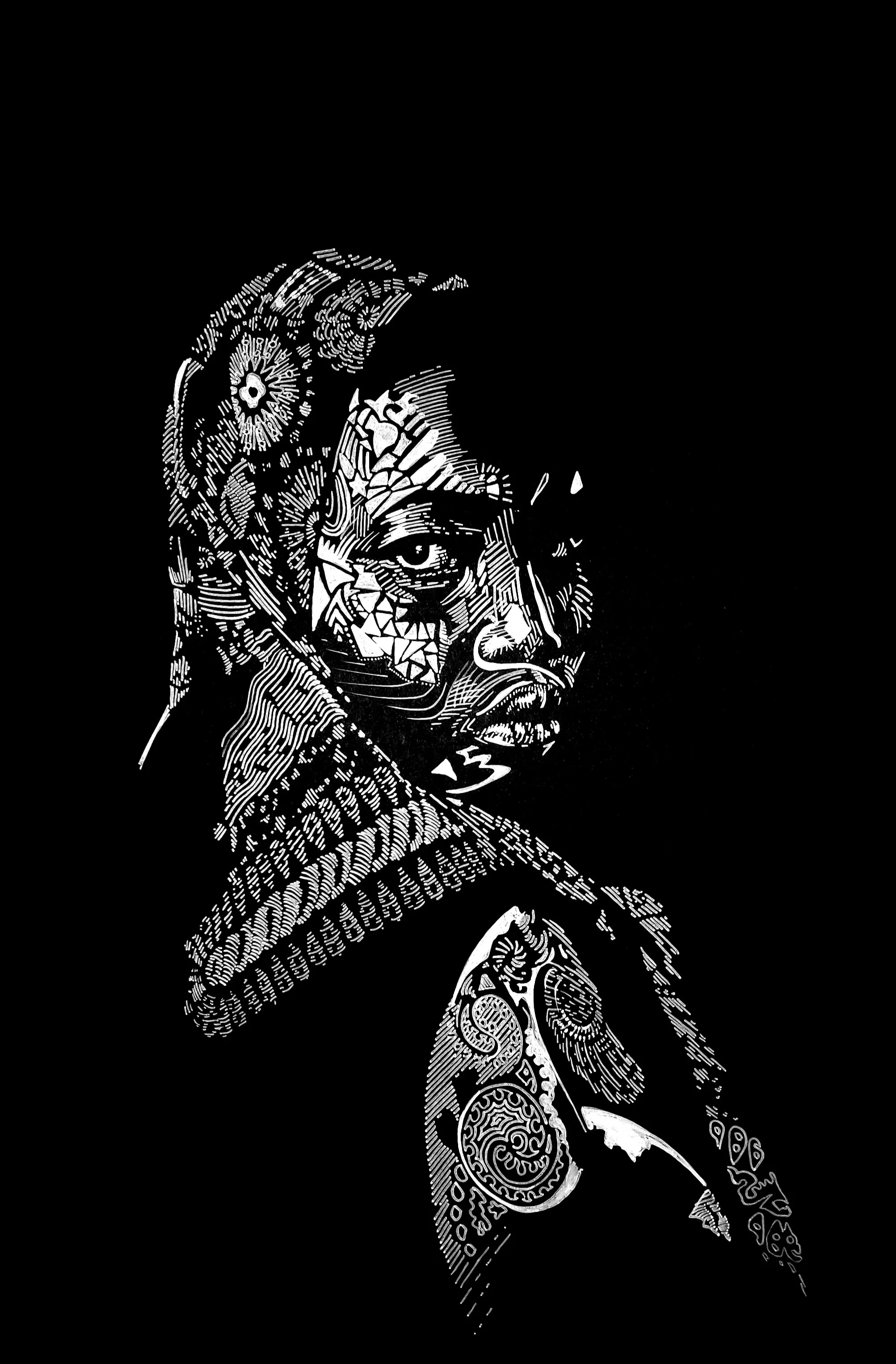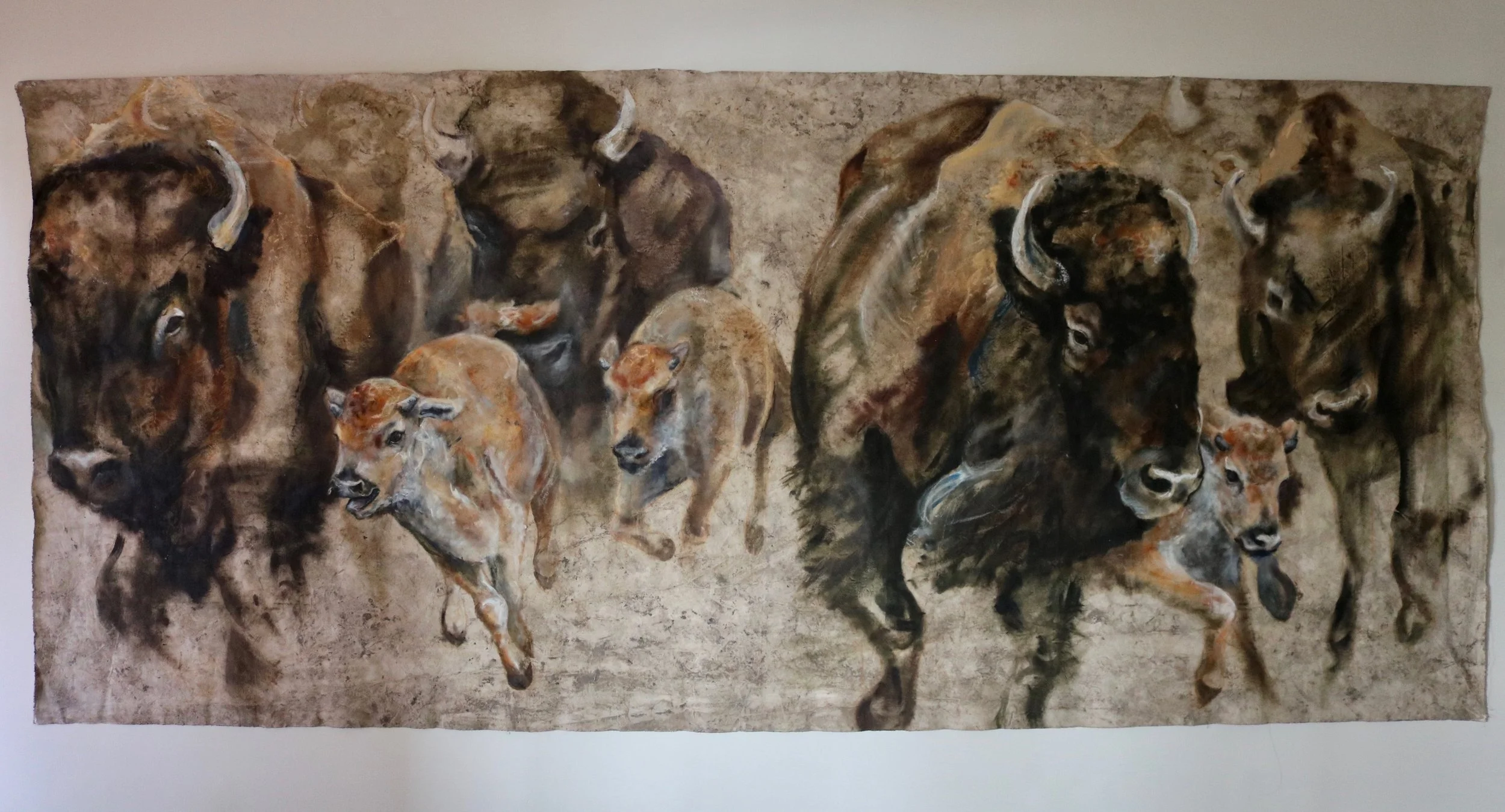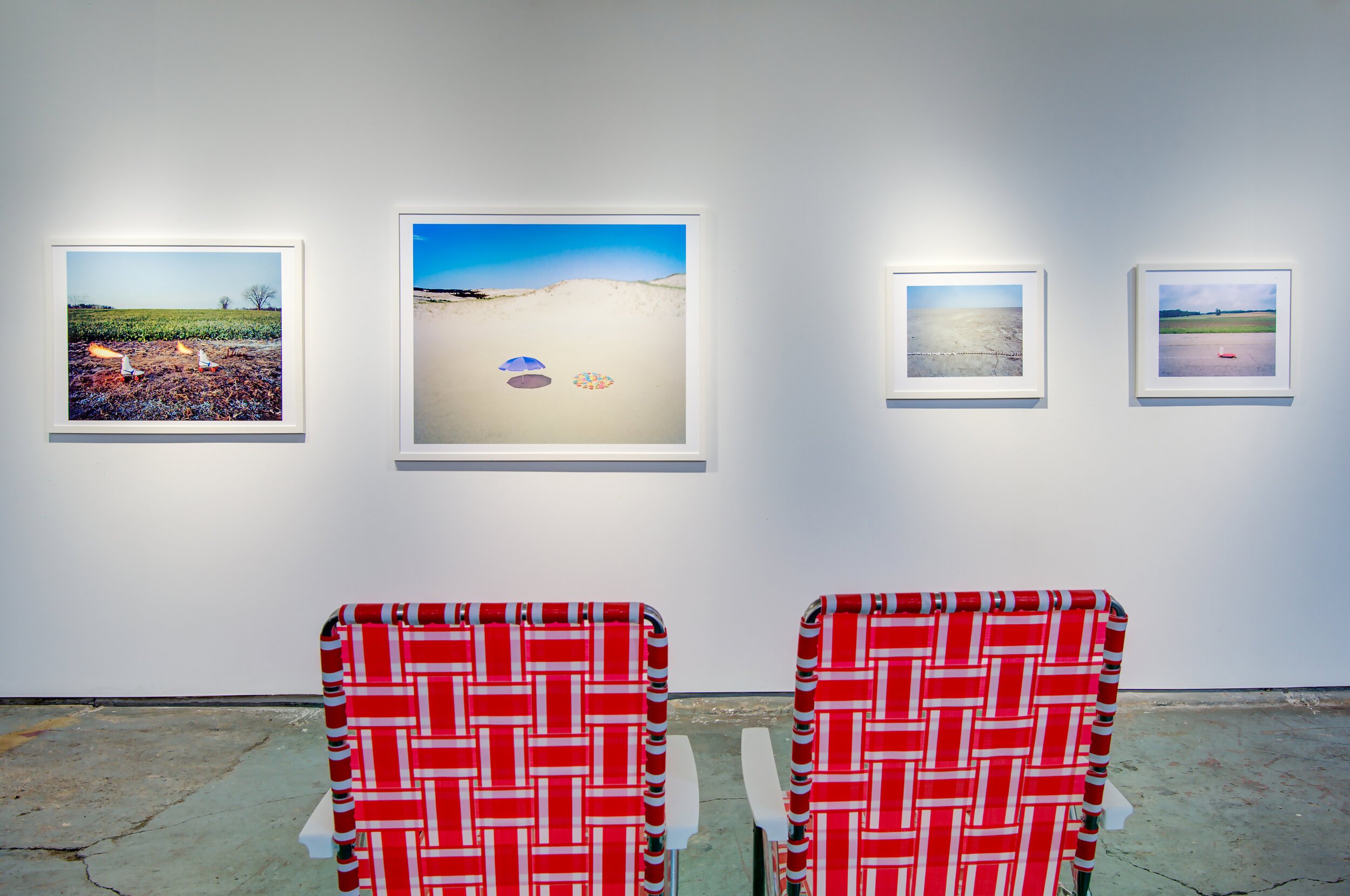This body of work is an exploration of the physical and figurative aspects of “place.” On one hand, the word “place” refers to our built environment, choices of design, and our interactions with the physical world. On the other hand, it refers to a sense of belonging that is cultural and emotional–still deeply tied to the physical world, but able to exist without it through memory. I invite the viewer to step into the threshold separating “here and now” from”‘then and there.”
Read MoreIn this body of work, I am exploring the dream that there are still places and things we have not discovered, things we may not even comprehend. Inside of familiar volumes such as instrument cases and terrariums, I am creating spaces that give a glimpse of some other world, somewhere weird and wrong. This is Cthutopia.
Read MoreIn an exploration of this concept, “Grief Etiquette” is an immersive installation about the non-linear stages of my grief, shown through archival imagery and sound.
Read MoreWith “HERE IT IS IT ALWAYS IS,” Russell continues to explore themes of hope, anxiety, compassion and our place in an ever-expanding universe.
Read MoreAmidst an array of light and sound, Skärgården re-imagines cold war paranoia in the Stockholm archipelago in light and sound. The heart of this art installation is a self-organizing wireless mesh network that mirrors aspects of both the isolation and cooperation of an interconnected system of separate parts.
Read MoreThose of African descent are the most underrepresented group in the world of fine art. Black faces are beautiful. Digging deeper, we see that by working on black surfaces with white ink & paint, Reynolds draws in the light instead of the shadow, with emotive figures emerging from the deep, catching light in the way only melanin can.
Read MoreThe number of sites of incarceration—where people are “pinned
down”—is big as well. It makes sense, right? We need a lot of
buildings and cells in which to lock up all these folks.
Federal prisons. State prisons. County jails. City jails. Local lockups.
Life-sized, sprawling canvases house images of animals that learned to live in new worlds, in habitats created by humans. Vidger’s painted canvases are aged with natural elements to move away from traditional, romanticized landscapes. She removes the animals from their environments, from their homes so we see them in this state of limbo, wondering where they go next. “By utilizing natural pigments to age my canvases, I present an alternative landscape that expresses the duality of desolation and splendor.”
Read MoreIn Unearthing, Stirratt explores how natural and cultural objects are presented in collections and museum settings, and how we preserve, classify, and display them.
Read MoreThe solo exhibit in partnership with Arte Mexicano en Indiana features a collection of watercolor and gouache portraits as an invitation to be collectively vulnerable, to create and archive that speaks of intimacy and eroticism.
Read MoreThe exhibit highlights several extinct or threatened species in Posey County. The pre-human ecosystem in our area was abundantly populated and in natural balance. After man settled along the Wabash and elsewhere, this utopian equilibrium eroded to the point of dystopia. The world now faces environmental, social and economic catastrophe, while our perverted material culture still spreads an unrealistic ethos of fossil fuel powered unlimited growth, fast fashion, junk food and surveillance capitalism.
Read MoreHocking spent three weeks in Indianapolis gathering materials from the site, documenting, researching, and creating his installation. He hauled over 100 massive hunks of burned Styrofoam, multiple plastic blobs melted by fires, fragmented fast food signage, nifty anthropomorphic food-character murals, and dozens of other artifacts. He brought this all to Tube Factory. And he worked onsite while living in Big Car’s neighboring artist residency home. The resulting installation uses the main gallery as a kind of ceremonial site — the burned Styrofoam mountain could be a dystopian temple or future glacier.
Read MoreIn his first solo exhibit, Davis creates a room-shaking, fifteen-minute surround sound piece that traces the tragic and deadly ironies, lies, and realities comprising the Vietnam War. This, staged among ephemera and original illustrations by Chicago-based visual artist Keith Couture, are laid bare for us to sit with and listen through in hopes that we may gain a clearer understanding of the relationship between capitalism and the endless conflicts that occur for or against its profits.
Read MoreSister Song: The Requiem is a community-based project that examines how art and community co-creation processes can be used to heal the intergenerational trauma associated with enslavement and its aftermaths. The project, led by artist LaShawnda Crowe Storm, blurs the lines between the public and private by transforming mundane places into sacred spaces through public rituals. A requiem is an act of remembrance for the dead. How does honoring the dead give life to the living? How does the living remember their histories while creating new futures? How does embracing history help us release specific traumas and move toward a future where healing is possible? We explore these questions through the community co-creation process that is at the heart of Requiem: womb making.
Read MoreMulti-genre visual artists Kelvin Burzon and Jenny Delfuego are creating movement-based work to accompany their visual art as part of a partnership between Big Car Collaborative and Indy Movement Arts.
Read MoreIn Summer 2020 a collective uprising rooted in local civic engagements ricocheted around the world in response to the murder of George Floyd by Minneapolis police officers. While this was going on, Graves photographed memorials, monuments, and sites of the antebellum South and the Confederacy. A Southern Horror is primarily a series of 175 non-fungible token or NFT works.
Read MoreFrom the hands of a young person in China, to a shipping container crossing the Suez Canal, to a semi-truck driver transporting containers cross country, to people at the big box or mom and pop who unload them, to everyone going to the stores to buy things. These are carbon borders we’ve created 一 our feet, our cars, trains, planes, streets, and sidewalks all in motion. These borders both connect and divide us.
Read MoreFor artist Adam Ekberg, moving past boredom means finding a space in which the mind is free to devise a logic of its own, and ordinary objects are liberated from the drudgery of daily life. The resulting photographic interventions are both mysterious and delightful. Cocktail umbrellas no longer shade tropical beverages but rather occupy a sunny beach en masse. Roller skates once relegated to an indoor rink now drag-race across an empty field propelled by burning aerosol cans.
Read More“Fag Family is a series of double portraits of individuals in Nick May's queer community. "These portraits capture the queer relationships, queer spaces, and the liberating magic of queer world-building that I have the privilege to observe and be a part of,” says May.
Read MorePathology is a compilation of photographs, discovered by Taylor and his brother in their grandfather’s attic. The photos, depicting violence and death, were taken during the time he served as a coroner between 1981 and 1990. As Lewandowski reflects on death and is forced to confront it, he writes about the tragic nature of the photographs he shares and pointing to the complicated ideas behind life as he reflects upon the people his grandfather photographed and the endless cycle of life and death.
Read More
